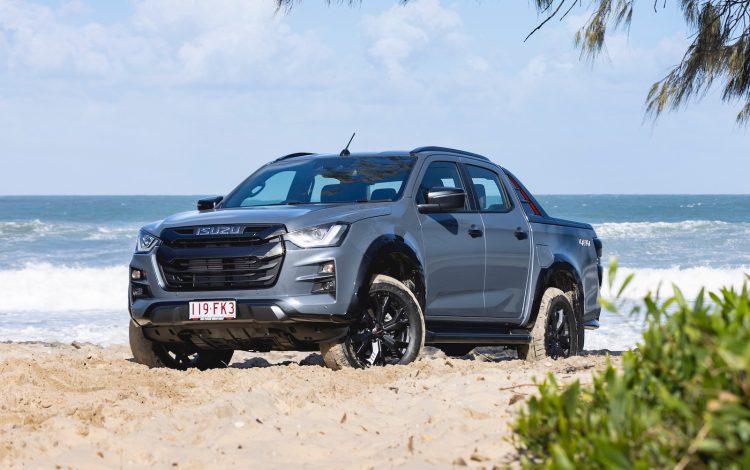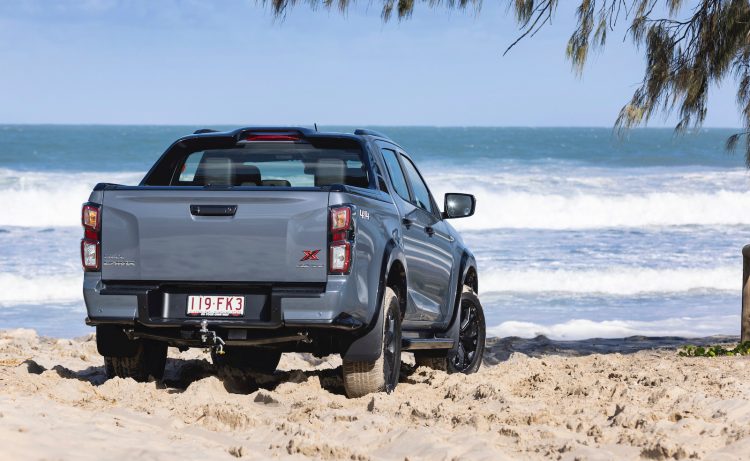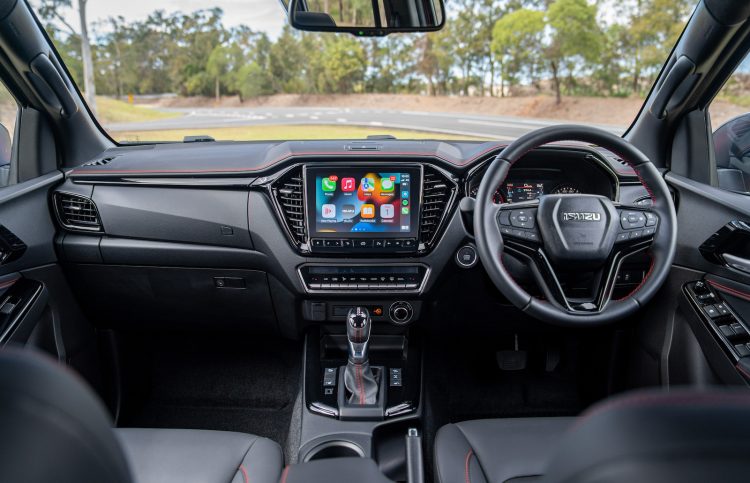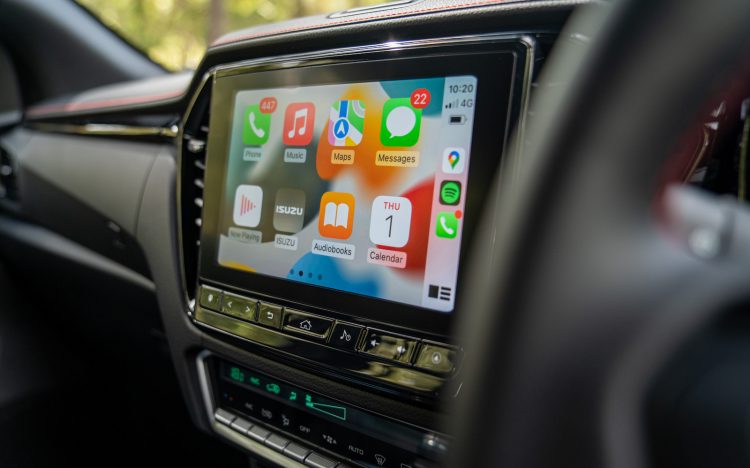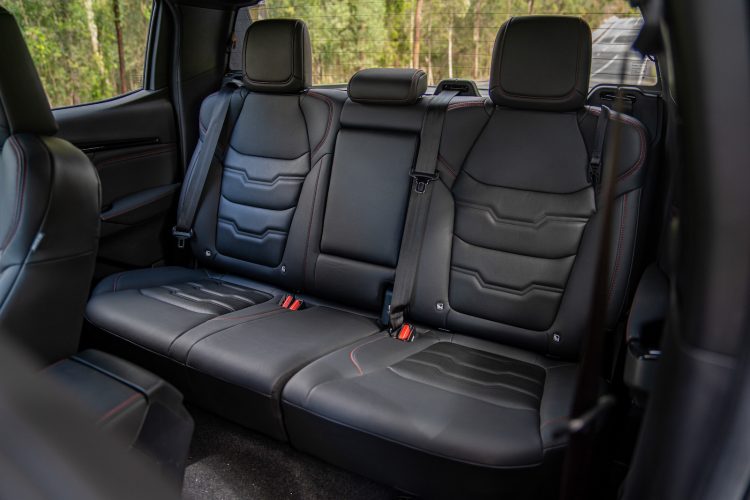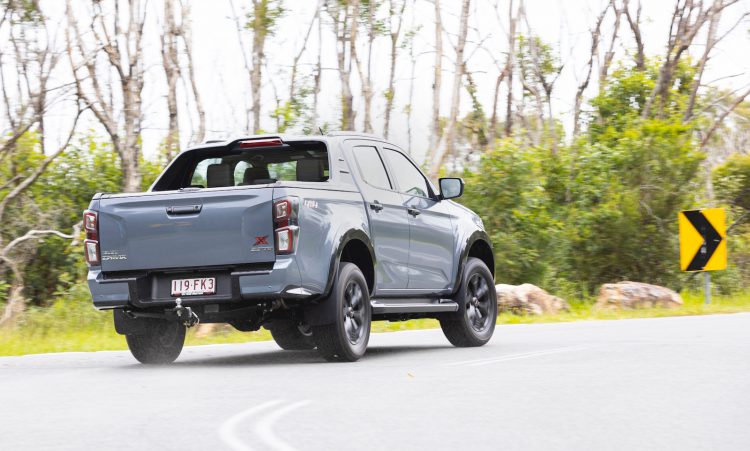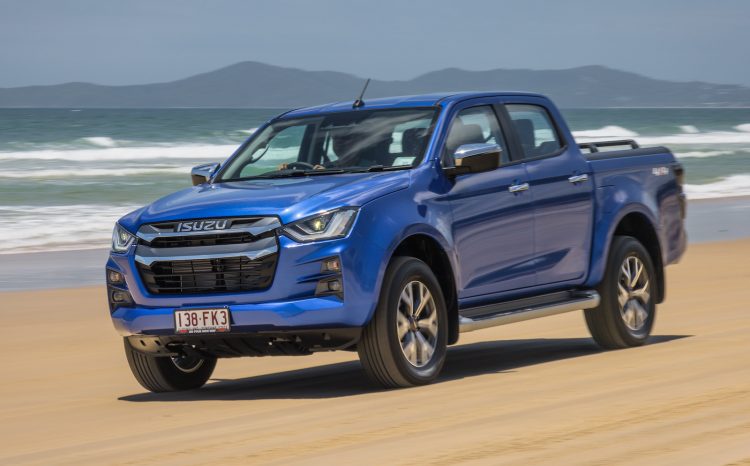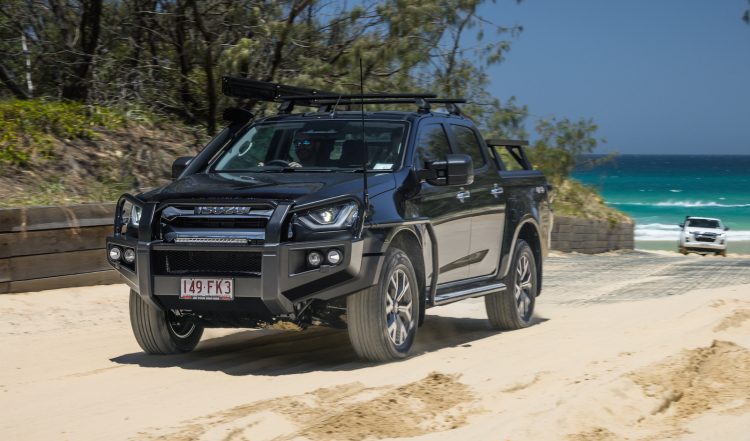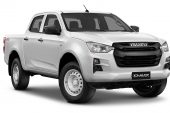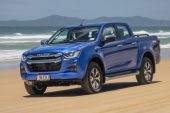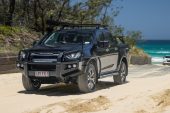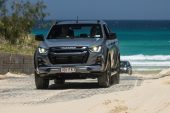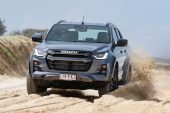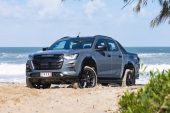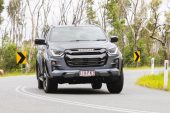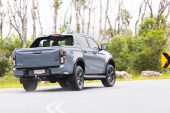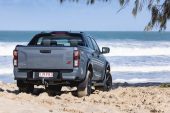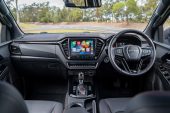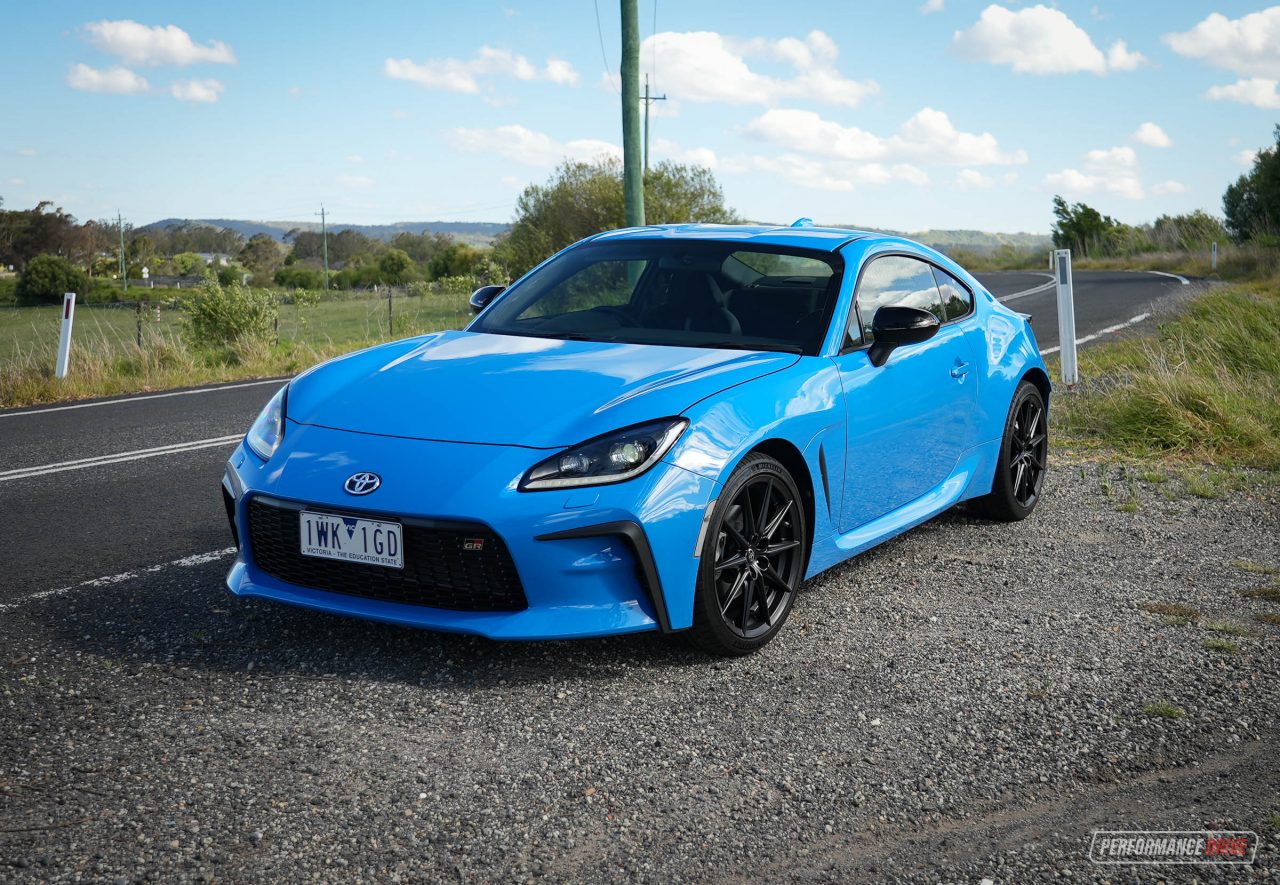Looking to buy a durable, capable and proven dual-cab ute? The 2023 Isuzu D-Max has just arrived in Australia, bringing in a number of minor updates to help it fend off the fierce existing and hungry emerging rivals.
The D-Max is one of the most popular new cars on the market in Australia, outright. And in the 4×4 ute segment, it is the fourth best-selling model (according to November VFACTS). Sales are up 9.2 per cent across the first 11 months of the year compared with last year, but with rivals pushing the benchmark further and further forward, will the D-Max be able to keep up and hold on before its next-gen arrives?
Well, sure to help, Isuzu has expanded the range for the MY2023 so now there are more configurations available. For example, the 1.9 turbo-diesel engine option that we saw introduced for the single-cab SX last year is now offered in dual-cab 4×4 and 4×2 forms. Aside from the tradie-spec SX, the MY23 continues in four trim grades, running from the LS-M, LS-U and LS-U+, with the X-Terrain sitting above as a sporty variant.
For this test we’re mainly looking at the X-Terrain as that is what we drove the most during the official media launch event last week, held in Brisbane and Noosa.
2023 Isuzu D-Max X-Terrain – THE SPECS
Engine: 3.0-litre turbo-diesel four-cylinder
Output: 140kW@3600rpm / 450Nm@1600-2600rpm
Transmission: Six-speed auto
Drive type: Part-time four-wheel drive, locking rear diff
0-100km/h (PD tested): 9.59 seconds (based on MY2022 X-Terrain test results)
Official fuel economy: 8.0L/100km
Starting price: $64,990 (drive-away)
Firstly, what has changed for the 2023 model? Most models receive a revised front grille design in either two-tone grey and black or grey and chrome, with dark grey metallic LED taillights for the LS-U models and X-Terrain. Some new-look 18-inch alloy wheels have also been applied to both the LS-U twins and the X-Terrain. Aside from that, the MY23 is pretty much identical, visually, to the pre-facelift.
Some hardware, or software to be completely accurate, has been updated as well to improve convenience. As with the MY23 MU-X, also launching this week, the MY23 D-Max range comes equipped with an automatic-off function for the blind-spot monitoring system and rear cross-traffic alert system when a trailer is hitched.
This is because such systems cannot operate properly when a trailer is hooked up. Now, without needing to manually switch off the systems, towing is made just that bit less stressful. There’s also new tailgate struts for body-back models to ease the opening and closing process.
Inside, the LS-M sports a new cloth seat upholstery, with updated leather-accented trim for the LS-U+ and X-Terrain. The X-Terrain adds excitement with red stitching. Aside from that, the cabin is just as before, offering a blend of hard-wearing materials and creature comforts.
Entertainment and settings adjustments are provided through a 9.0-inch touch-screen system in the LS-U and above, which carries over from before. It’s not the most advanced system but it runs most of the functions we all want from a modern vehicle. Android Auto and Apple CarPlay, sat-nav, digital radio, and a rear-view camera are just some of the standard items.
However, you won’t find a surround-view camera system, which is fast-becoming the norm even in dual-cab utes, and you won’t find a high-end stereo in any variant. For comparison, the latest Ford Ranger Wildtrak comes with a cranking B&O system and Toyota offers a similarly-booming package by JBL.
We’re not convinced this touch-screen layout is the best Isuzu could come up with. Actually, it feels like it was slapped together as a last-minute exercise. The menus are quite basic and there is a lot of blank space. The screen itself doesn’t seem polished, resulting in less-than-crisp graphics, compared with some rival systems.
As for passenger comfort and space, the D-Max remains near the top of the class. This is spacious and user-friendly, with a variety of storage options around the place and conveniently-positioned buttons and controls. It all looks familiar and friendly, even if you’ve never stepped foot in here before.
Rear passengers are greeted with adequate legroom and a pair of climate vents, while the second row in the SX gets a 2.1-amp USB socket, like the upper models. As is the case with most utes on the market, the ride quality in the back is not as good as it is in the front. This is mainly due to a heavier-duty live-axle suspension layout with leaf springs compared with independent coils on the front.
In saying that, we think the ride quality of the D-Max is pretty good for its class. It uses a three-leaf setup that isn’t too bouncy. But, importantly, most trim levels offer a competitive payload capacity. The X-Terrain automatic, for example, is rated at 925kg. The D-Max also offers a braked towing capacity of 3500kg.
We had a chance to sample the new model on some highway roads, mountain roads, and out on the beach on sand. Across all conditions the D-Max performs well. It is reasonably comfortable and quiet on the highway, with good visibility allowing you to judge width and distances quickly, while the handling and body roll resistance is above average for this segment.
This 3.0-litre engine is one of the longest-running employees you’ll come across. It is so loyal and reliable that it’s endearing. You love it regardless of what it does. But, fortunately, it does plenty of good things.
With 140kW and 450Nm, it is starting to fall behind its rivals on paper. On the road though it provides decent performance and shove when you need it, and respectable fuel economy for its size. We’ve previously timed 0-100km/h in 9.59 seconds. The official consumption average is 8.0L/100km and the average emissions is 207g/km.
Should you buy one? The new model is not as fancy as some rivals, not as advanced as others, and on-paper engine performance won’t give you any bragging rights. However, and we think this is the most important aspect of the D-Max, the sum of its skills averages out to provide a very well-balanced mixture of attractive characteristics.
We mean this in the nicest possible way, but we like to think of the D-Max as the Toyota Camry of utes. It isn’t the most flamboyant car out there or the most powerful, but it gets on with its job and it doesn’t have to try hard to achieve front-running results. The D-Max is excellent in terms of fulfilling its intended purpose and it’s a tool that you can always rely on.
It’s a shame MY23 updates are not that significant, although, we suspect many loyal buyers will be happy that most areas are left alone; after all, if it ain’t broken, don’t fix it. Even the prices are left untouched from MY22, which is surprising given most competitors have applied sizeable hikes in recent times.
